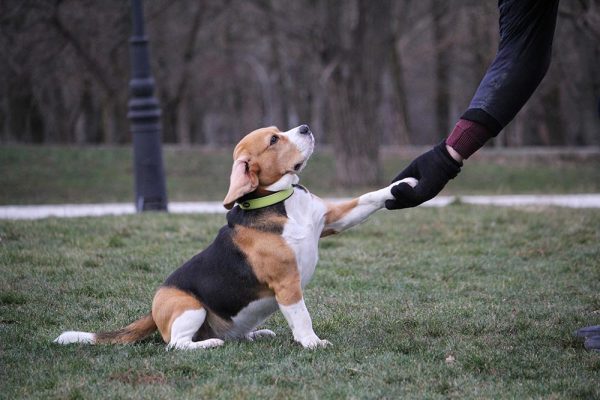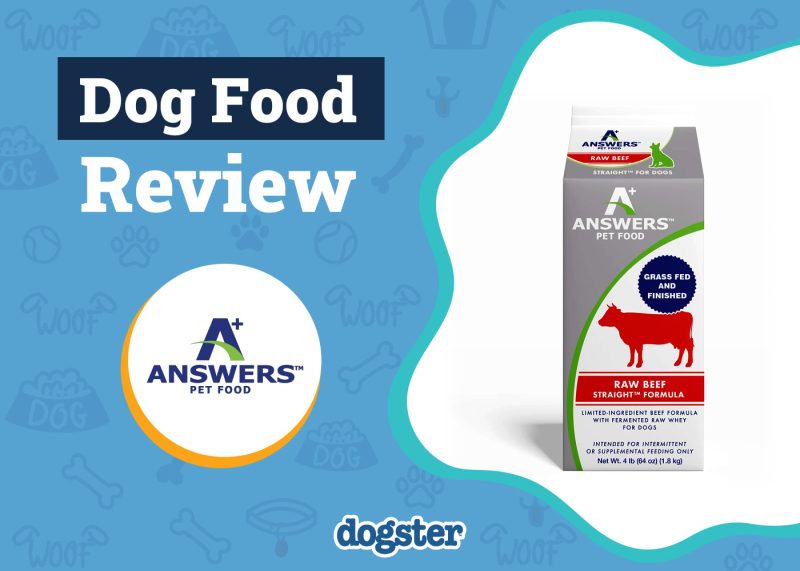Miniature Dachshunds, sometimes affectionately referred to as Wiener Dogs or Doxies, are a smart and vibrant breed. While they are smaller than their Standard Dachshund counterparts, they have the same (but smaller) body type with very short legs and a long-bodied torso. Like most specific dog breeds, Mini Doxies have various frequent health conditions that they are more prone to getting.
For each of the individual diseases that commonly affect them, what are the causes, signs, and prevention that an owner should know about? Read on below as we explore this concept more.

The 6 Miniature Dachshund Health Problems
1. Progressive Retinal Atrophy (PRA)
This medical condition results in blindness when the retina in both eyes degenerates over time. The purpose of the retina, which is at the back inside of the eyeball, is to convert light to electrical signals before then being sent to the brain. For Miniature Dachshunds, this disease is caused mostly due to being inherited genetically and often starts in younger dogs.
Signs that are seen may start out small (such as difficulty seeing at night or dilated pupils) and then progress over time to blindness. Unfortunately, aside from screening and testing if a dog is a carrier for this gene (which may be helpful in preventing dogs who are affected from breeding), there is not much that can be done as far as prevention.
Despite this, the good news is that with some help, many blind dogs can still do well in life with their own adaptations and compensations as well as helpful human interventions. Memorizing their environment will be helpful, but their other strong senses can help compensate for a lack of sight. Additional considerations may be to keep a close eye on a blind dog when outside, having their access to stairs partitioned off, etc.
2. Intervertebral Disk Disease (IVDD)
This is a neurological spinal problem that is a predominant health issue in the breed. In fact, Dachshunds are 10 to 12 times more likely to experience IVDD compared to other dog breeds and 19–24% of Doxies have IVDD signs at some point in their life. So what exactly is IVDD? It may commonly be called a “slipped disc,” but is where there is a herniation, or protrusion of the cushioned space between the vertebrae, which then compresses the spinal cord.
The severity can vary from mild pain to complete paralysis and everything in between. While there are two types of IVDD, Hansen Type 1, which is an acute disc rupture, is most common in Dachshunds while Hansen Type II is typically seen in large-breed dogs.
Causes of IVDD include genetic factors as well as physical body conformation. In addition, lifestyle risks may all play a role in getting this disease such as playing rough or jumping off of the bed or couch, etc. Injury can also precipitate this problem.
If a dog has this health problem, common signs would be pain in their neck or back area, having their paws knuckle over, limping or weakness in the leg(s), inability (or unwillingness) to walk, as well as difficulty urinating or defecating.
Prevention may not always be an option, but lowering the likelihood of risk of problems includes keeping a Miniature Dachshund at a healthy weight. In addition, limiting their opportunities to jump, land, or have quick, unpredictable movements by providing ramps, lifting them down correctly, and limiting certain play options or activities may help. Breeders can also do genetic testing that can help decrease the risk in potential future puppies.

3. Periodontal Disease
This may also be commonly referred to as dental disease, but periodontal concerns start when food and bacteria form plaque along the gumline which then hardens into tartar. This, in turn, results in gingivitis (inflammation of the gums) and other subsequent problems such as tooth and gum pain, pockets in between the gums and teeth, loss of tooth attachment, infections, abscesses, damage to the bone, and then, total tooth loss.
The cause of periodontal disease may be due to many factors; it may be in part due to genetics, but proper routine dental care is also paramount. Risk factors can also include an older dog, eating mostly soft food, teeth crowding, and retained extra teeth. In addition, the size of a dog can also play a role, since generally speaking, the smaller a dog is, the higher their risk of periodontal disease. This includes a small breed dog such as a Miniature Dachshund!
Signs of periodontal disease may include bad breath (halitosis), bleeding or inflammation along the gum lines, a large amount of yellow/brown material along the teeth, having a hard time eating, not wanting to eat, swelling on the face, excess drooling or licking, continual pawing at or rubbing of the face/mouth, and head shyness or pain within or around the mouth.
The great news is that periodontal disease is able to be entirely prevented. Proper and routine dental health can be achieved best with the gold standard, or the mechanical brushing action along a dog’s teeth that is frequent, ideally every day. In addition, routine veterinary exams and COHATs (Comprehensive Oral Health Assessment and Treatment) are important. COHATs include a thorough detailed oral exam under anesthesia, full mouth dental radiographs, treatment of any affected areas such as teeth extractions, the scaling of tartar above and below the gum line, and polishing of the teeth.
While not the gold standard, there are also many other home dental options (with varying degrees of effectiveness) including dental diets, dental chews, teeth wipes, and water additives. For anyone considering such options, it is recommended to choose a product that has a Veterinary Oral Health Council (VOHC) seal of approval.

4. Overweight and Obesity
Miniature Dachshunds are a smaller-statured breed with a unique body conformation, and because of that, a few extra pounds can be a significant health problem. An overweight dog is about 5–19% more than their ideal body weight, while more than 20% is considered obese. The most common cause of too much body fat is simply overfeeding or feeding more calories than is merited by the activity level of the dog. There can also be genetics at play, and in a smaller subset of cases, other medical causes, such as hypothyroidism or Cushing’s disease.
Signs of a dog being overweight or obese include being less active, weight gain or extra body fat, no visible waistline when viewing from above, unable to feel the ribs because of a large layer of fat over them, or unable to see a tuck-up from a dog’s chest to their stomach when viewing from the side.
The biggest key to prevention includes portion control. Measuring food with a kitchen weight scale can be extremely helpful! In addition, ensuring regular safe activity and exercise are integrated daily, not giving table scraps, trying low calorie “treats” such as baby carrots or pumpkin, and ensuring any treats that are given are less than 10% of their allotted calories/day are all integral to a healthy weight.
Asking your veterinarian about your dog’s body condition score and how to best achieve a healthy weight plan is advisable, as just feeding less may result in malnourishment. Your veterinarian can help calculate the ideal number of calories for your dog and discuss diet and exercise specifics and recommendations.
If you need to speak with a vet but can't get to one, head over to PangoVet. It's an online service where you can talk to a vet online and get the personalized advice you need for your pet — all at an affordable price!

5. Ear Infections
Miniature Dachshunds certainly have large ears for their small body frame! An ear infection, which typically consists of irritation and swelling, can affect different parts of the ear. In dogs, there may be an infection in the outer ear canal (otitis externa), the middle ear (otitis media), or the inner ear (otitis interna).
Ear infections can be due to various contributing factors. There is typically a primary cause which in dogs is most frequently allergies, but other causes could include an ear mass or a foreign object such as a foxtail (grass awn). The primary cause then can lead to a secondary ear infection with bacteria, yeast, or a mixture of the two. Some perpetuating factors can make the problem worse such as a narrowing of the ear canal or debris or inflammation within the ear. And predisposing factors, such as genetics or their specific lifestyle, like being around water frequently, may make a dog more inclined to have an infection.
Signs of an ear infection may include ear sensitivity or pain, inflammation or redness of the ear/canal, a foul or sweet abnormal smell coming from the ears, common or persistent head shaking or ear scratching, as well as excess dark debris around or inside the ear flap. Surprisingly, some dogs may not show any outward signs!
Some preventative tips for ear infection in dogs can include managing a dog’s allergies if they are a component, monitoring a dog’s ears regularly for signs of infection, keeping them clean with routine maintenance cleaning, and keeping the ears dry after swimming or bathing.

6. Luxating Patellas
This is a medical term that means the kneecap, the patella, is moving out of place, or luxating, from its normal grove. The kneecap may move outward (lateral luxation) or inward (medial luxation) from the grove where it usually sits within the knee. Medial luxating patellas are more common, especially in smaller breeds.
The most frequent cause of a moveable kneecap is genetic, often due to some level of defect within the dog’s anatomy. Another, less common cause of a luxating patella, could be due to trauma or an injury to the area of the knee and surrounding structures.
Some signs of this disease may come and go, meaning the kneecap may pop in and out of place but this will also be based on how severe the luxation is. Things to look out for include rear leg lameness, running with a hop, kicking out or holding up the back leg, rear knee pain, etc.
Prevention may not be entirely possible with the genetic component, except for not breeding those who are affected with the congenital form themselves. Weight control will help put less pressure on an affected knee and the surrounding areas, and promoting joint health with proper nutrition with regular exercise may help a dog’s body be as healthy as possible.


Conclusion
While many Miniature Dachshunds exhibit specific health conditions that are commonly associated with their breed, luckily this does not mean that they will all get all of these conditions.
However, by being aware of and learning about the causes, signs, and prevention of their most common health conditions, you are now armed to be your Miniature Dachshund’s biggest advocate and get medical care when needed so they can live the longest, healthiest life possible!
Featured Image Credit: JeebyJeeby, Pixabay


















